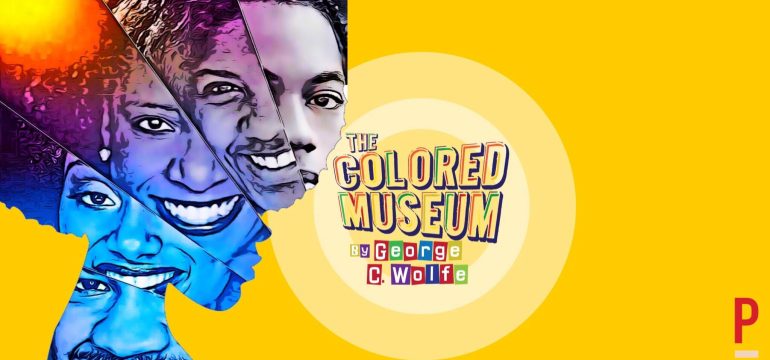Class procedures: From your manifestos, the class agreed upon the following classroom rules or procedures to follow:
Rules You Would Like Us to Follow:

The Colored Museum - Git on Board & Cookin with Aunt Ethel, The Photo Shoot; Soldier With a Secret; The Gospel According to Miss Roj, The Hairpiece,; Symbiosis; The Last Mama on the Couch Play; Permutations; & The Party
WRITING TASK: In your journal or notes, brainstorm some topics for a play that might be important subject matter for a play. Outline your idea. Consider:
Rules You Would Like Us to Follow:
- Participate in this course/class
- Support each other creatively & respect each other; be considerate (no bullying or judging!)
- Provide constructive criticism positively & speak up (communicate!) (see above!)
- Collaborate
- Stay on task/focus/put forth effort to pass (no procrastination! see above!)
- Come to class on time

Let's read the play together. As we read, after the scenes, we'll stop to examine/answer these questions together as a class.
- The character speaking hooks his/her audience--what grabs our attention? What specific lines or narrative compels us (as an audience) to listen attentively?
- How the character(s) communicate(s) meaning (what's the purpose/point of speaking?) What seems to be the playwrights' message or point to his audience?
- How details and stage descriptions are presented to the audience. Why is it important to explain the action or character information in the stage directions as opposed to the words the characters say? What actions are suggested by the DIALOGUE or speech in the scene?
- How the story and plot are interwoven into the monologue or scene. What happens in the story? Examine what happens in the beginning, middle, and finally the end of the scene or monologue. How does the scene/monologue feel "complete"?
- How the playwright Wolfe uses language or diction to create visual imagery (metaphor, allusion, personification, symbol, simile, etc.), sound imagery (onomatopoeia, rhyme, rhythm, alliteration, assonance, consonance, etc.), and kinesthetic imagery (the movement of the characters or their actions; e.g., what are we "seeing" happen on stage?)
- How props or costumes are used (if any) help establish setting or character. What do props or costume descriptions add to the scene or monologue? How do they help develop or define characters or setting?
- What did you think about the play as a whole? Did it surprise you or please you or frustrate or confuse you? Which scenes or monologues did you like most? Why? Explain why you reacted to the play in this way.
- What is the premise of "The Colored Museum"? In a sentence or two, explain what you think is the premise or main idea/theme of the play. Is this premise interesting or important for a contemporary audience? Do you think people would pay to see this play if performed today? Why or why not?
- What challenges and stage requirements are necessary to produce this play? How has George C. Wolfe anticipated a low-budget theater being able to produce his play? What might a wealthy or supported theater be able to add to a production of this play? What did you learn about staging from the monologues or scenes you read?
- Why are the monologues or scenes in the order that Wolfe puts them? What is the reason to start and end the play with the monologues/scenes he does?
- Other observations? As a writer, what did you notice? What do you want to talk about in regards to this play? What might be important to remember as you write short scenes of your own?
The Colored Museum - Git on Board & Cookin with Aunt Ethel, The Photo Shoot; Soldier With a Secret; The Gospel According to Miss Roj, The Hairpiece,; Symbiosis; The Last Mama on the Couch Play; Permutations; & The Party
WRITING TASK: In your journal or notes, brainstorm some topics for a play that might be important subject matter for a play. Outline your idea. Consider:
- Where would the action of the play take place?
- Would you have a single act or several? A single scene, or several? Why?
- What would be the basic PREMISE of your play?
- What characters would be needed to tell your story?
- Would the play end happily or tragically? What are some reasons why this would be your best choice?
HOMEWORK: If we didn't finish watching the linked scenes of the play, please watch those. Complete the WRITING TASK above in your notes/journal and bring your outline to our next class. We will begin to write a short scene or monologue using your brainstormed idea.

No comments:
Post a Comment